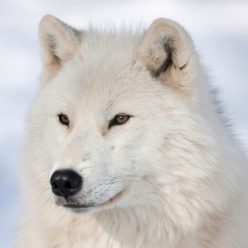After the failure of US efforts to topple the government of Bashar al-Assad in Syria, there has been much hand wringing over Assad’s victory (which was achieved with the aid of the Russian military) and Putin’s influence in Syria. In a recent article in the Los Angeles Times, the authors lamented
“What they (the Russians) want to do is limit the ability of western countries to operate militarily in Syria and they are doing that by establishing their military presence in Syria”.
Well, yes. From the Russian viewpoint, that would seem to be a very smart move since political instability on your border isn’t the most comfortable situation.
Since the defeat of the Ottoman empire and the establishment of a Jewish state in Palestine, the entire Middle East has been unstable. In particular, US military operations in the Middle East since the withdrawal of the British and French have been nothing short of disastrous. The net result of US intervention in the Middle East has been the destabilization of Afghanistan, Iraq, Libya, Yemen and other countries, and the creation of Al Queda, ISIS and other terrorist groups that are creating havoc throughout the Middle East and Africa. The problem for the Russians is that this Middle East instability and terrorist activity is very close to their borders; and they already have enough problems with terrorist organizations inside their own country. Being that close to their borders, the Russians have much more to fear from an unstable Middle East than Americans who are protected by two vast oceans and a military arsenal as large as the combined arsenals of the rest of the world.
What is little discussed in the US media is that the Russians fear both terrorist and western aggression against them. This fear is not unwarranted as Russia has been invaded over the centuries by numerous countries from virtually every direction. Western countries that have invaded Russia include Sweden, Poland, France, Britain, Germany, Turkey, and even Canada and US. (Read your history.)
US Special Forces in foreign countries
Furthermore, US forces are operating all around Russia’s borders while there are no Russian military operations near US borders1. In 1990, the US agreed to prevent NATO expansion to the east in return for the reunification of Germany. However, following the collapse of the USSR, the US has attempted to turn every former Soviet Republic and Soviet Bloc country against Russia and has moved NATO forces right up to Russia’s borders.
So the question is why the paranoid fear of Russian aggression when recent history (last two hundred years) reveals that Russians have been the victims rather than the aggressors? In particular, why do Americans fear Russian aggression? This fear is totally unwarranted. Anyone seeing a threat to the US from country half way around the world separated by two vast oceans that has less than half the US population, less than 1/10 the US GDP, less than 1/8 the US military budget ($70B compared to $600B), and 2/3 the active military personnel equipped with inferior weapons, has to be borderline schizophrenic as well as paranoid.
The Russians have much more to fear from the US than the other way around. Not only have we encouraged NATO to move its forces right up to Russia’s borders, we have supplied them with the latest and best weapons systems money can buy. On top of that, the Russians, and the Soviets before them, have said many times that they would never be the first to deploy nuclear weapons in war. Yet, the US insists on keeping the option of deploying nuclear weapons whenever it damned well suits the President (about whom I will not discuss at this time).
Given the asymmetry in military and economic strength, it would seem to me that we should start asking, who is benefiting from the propaganda war against Russia?
1 That’s not quite true. The Russian Navy patrols the regions around northeast Siberia which is separated from Alaska by the 55 mile wide Bearing Strait and there is a small Russian military detachment on the island of Big Diomede which belongs to Russia and is only 2.2 miles from the island of Little Diomede, which belongs to Alaska.
